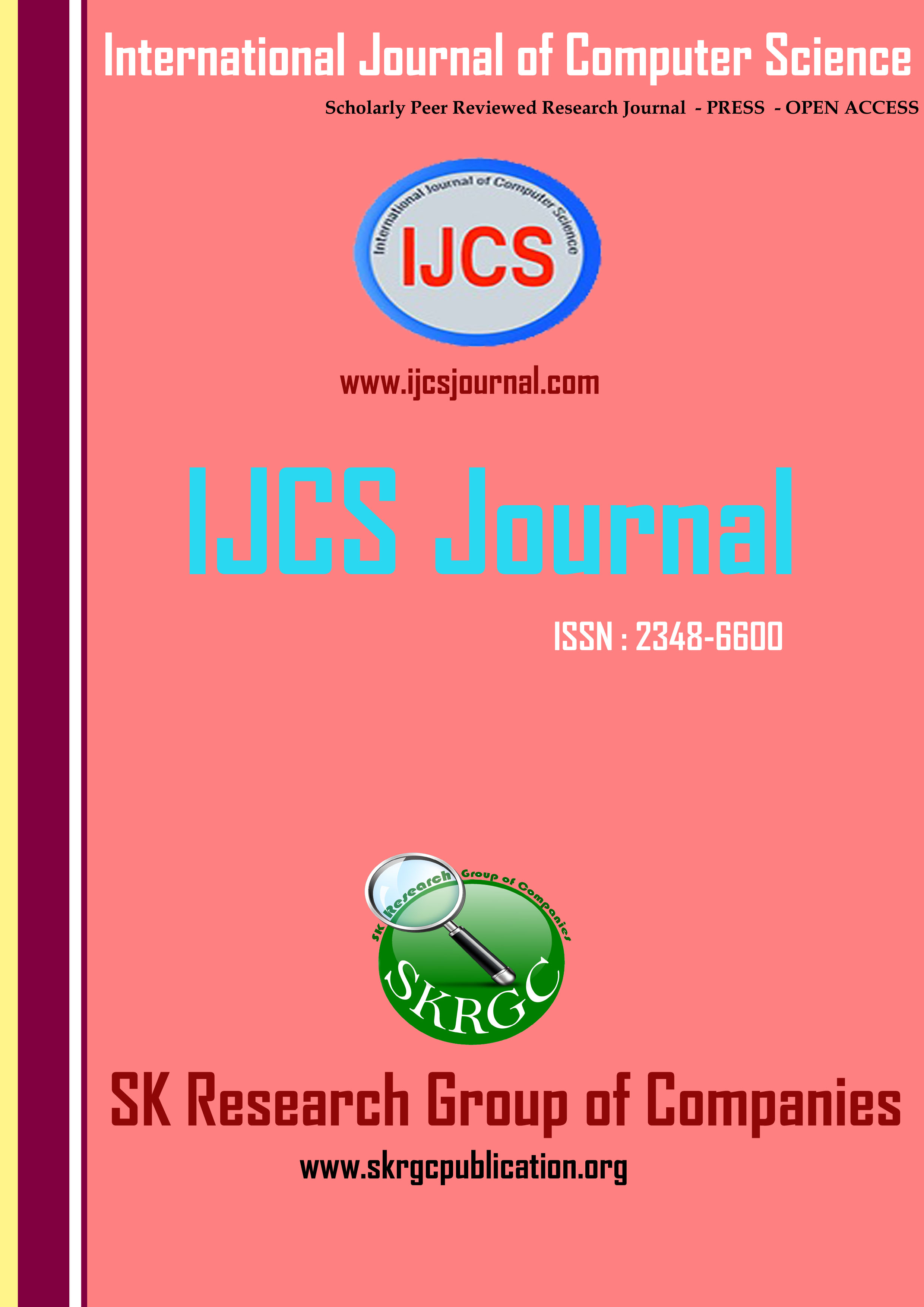DOF: Duplicate Detectable Opportunistic Forwarding In Energy Consumption Duty Cycled Wireless Sensor Network
International Journal of Computer Science (IJCS) Published by SK Research Group of Companies (SKRGC)
Download this PDF format
Abstract
In this paper Forward Error correction Techniques have been analysed and investigated. It is used to enhance the efficiency and accuracy of information transmitted over a channel. The principle this method is to add some redundancy to the data to be transmitted over a channel. Amongst so many technique of FEC coding, Turbo codes are more commonly used now a days due to its compatibility. Turbo Codes have been licensed on a worldwide basis to ST Microelectronics. The investigation of applications of turbo codes has produced new concept for spatial transmission with greater efficiency. this paper aims at getting efficient and reliable communication.
References
[1] Berrou, C., Glavieux, A. and Thitimajhima, P., “Near Shannon limit error correcting coding and decoding: turbo-codes,” Proc. Of ICC ‘93, Geneva, May 1993, pp. 1064-1070.
[2] Berrou, C. and Glavieux, A., “Near Optimum Error Correcting Coding and Decoding: Turbo-Codes,” IEEE Trans. on Communications, vol. 44, no.October 1996, pp. 1261-1271.
[3] Benedetto, Sergio and Montorsi., Guido “Design of parallel concatenated convolutional codes,. IEEE Transactions on Communications, vol. 44, No. 5, May 1996, pp. 591-600.
[4] Blackert, W. J., Hall, E. K., and Wilson, S. G., "Turbo code termination and interleaver conditions," Electronic Letters, vol.31, No.24, November 1995, pp. 2082-2084.
[5] Battail, Gerard, "A conceptual framework for understanding turbo codes," IEEE Journal on Selected Areas in Communications, vol. 16, No. 2, February 1998, pp. 245-254.
[6] Dharmendra. K .Singh, "Turbo code study and simulation for mobile communication systems", MSc Thesis, University College Cork, September 2001.
[7] Dharmendra Kumar Singh, Liam Marnane, Patrick Fitzpatrick “Reconfigurability of Turbo Codes for Differentiated QoS” ISSC 2003, Limerick. July 1-2
[8] C.E. Shannon, "A Mathematical Theory of Communications", Bell Systems Technical Journal, January 1948.
[9] TSG-RAN Working Group 1(Radio) meeting 4 Yokohama, Japan 19-20, April 1999 “Puncturing Algorithm for Turbo Code”.
[10] Ali H. Mugaibel and Maan A.Kousa “Turbo Codes: Promises and Challenges”
Benedetto, S., et al., “A Soft-Input Soft-Output APP Module for Iterative Decoding of Concatenated Codes,” IEEE Communications Letters, vol. 1, no. 1, January 1997, pp. 22-24.
[11] S.Benedetto and G. Montorsi, “Tutorial 11: Turbo Codes: Comprehension, Performance Analysis, Design, Iterative
[12] Decoding”, IEEE International Conference on Communications (ICC?97), Montreal, Quebec, Canada, June 8-12, 1997.
[13] M. Oberg, P.H. Siegel, “The Effect of Puncturing in Turbo Encoders”, Proceedings of the International Symposium on Turbo Codes and Related Topics, pp. 204-207, Brest, France, 1997.
[14] S. Dolinru, D. Divsatar, “Weight Dkribution for Turbo Codes Using Random and Nonrandom Interleaver”, TDA Progress Report 42-122, pp. 56 -65, Aug 1995.
[15] Cruz-Perez, F.A.; Hernandez-Valdez, G.; Ortigoza-Guerrero, L, “Performance evaluation of mobile Wireless communication systems with link adaptation”, IEEE Communications Letters, Volume 7, Issue 12, Dec. 2003 Page(s): 587 – 589.
[16] Berrou, C. and Glavieux, A., “Near Optimum Error Correcting Coding and Decoding: Turbo-Codes,” IEEE Trans. on Communications, vol. 44, no.October 1996, pp. 1261-1271.
Keywords
Turbo Codes, Spatial transmission, FEC

